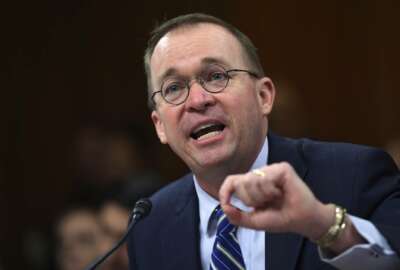
$152 billion cosmetic surgery for your pension package
If somebody said your federal pension plan needs $152 billion in nip and tuck surgery, would you be alarmed? Maybe you should be, says Senior Correspondent Mike...
Would you mind if your majority-millionaire Congress did a little nip and tuck surgery, making your retirement plan more expensive while you are working and then a lot less valuable when you finally retire? If you can ever afford it after the “improvements” kick in?
What if the rich guys in the White House and the Cabinet decided that federal and postal workers are living off the fat of the land both while working and afterwards in their golden (or would that be silverplate) years?
Guess what? They have.
In addition to a proposed pay raise freeze in January 2019, the White House and Congress are recommending that Congress make the following, uh, adjustments in the Federal Employees Retirement System and the old Civil Service Retirement System it replaced. Among the suggested improvements are proposals to:
- Do away with cost-of-living adjustments for both current and future retirees under the FERS program, which covers most feds still working.
- Shave future COLAs for CSRS retirees (both those still working and those already retired) by 0.5 percent each year from the actual increase in inflation. When combined with the elimination of the FERS COLA, this would cost federal retirees $50.2 billion over 10 years, and much more thereafter, according to the National Active and Retired Federal Employees Association.
- Payroll contributions from working feds under the FERS program would be increased 1 percent each year for each of the next six years without any increase in benefits. Congress scores this as a “this will cost FERS employees $68.7 billion savings — meaning loss to you — over the next 10 years, and more thereafter.
- The earned and fully funded FERS Annuity Supplement would be eliminated for new retirees who retire before age 62. This would cost federal retirees an estimated $18.7 billion over the next 10 years.
- Reducing the rate of return on the Thrift Savings Plan’s Government Securities Investment (G) fund. This would cost federal employees and retirees, as well as military personnel and veterans, $8.9 billion over the next 10 years.
- Federal pensions for new retirees would be based on the average of the highest five years of salary instead of the highest three. This would cost federal retirees $5.9 billion over the next 10 years.
- No federal pay raise in January, although uniformed military would get an increase.
- Reducing the amount of total paid time off by combining sick and annual leave into one pool. This proposal has the potential to decrease annuities, as unused sick leave is counted toward creditable service.
- Reducing working and retirement-age benefits for federal workers disabled through their service ($117 million over 10 years).
Other than that, just another day at the office.
So what do these proposals mean? What are the odds that any (or all) of them will be enacted into law this year? Or at some point during your career? We’ll find out today when we talk with, Jessica Klement, staff vice president, advocacy; Jill Talley, deputy director, public relations; and Jilly Talley from the National Active and Retired Federal Employees. They’ll be guests on our Your Turn radio show. That’s 10 a.m. ET at Federal News Radio or WFED 1500 AM.
Nearly Useless Factoid
Warren Harding had the largest shoe size of any president — size 14.
Source: Smithsonian
Copyright © 2025 Federal News Network. All rights reserved. This website is not intended for users located within the European Economic Area.
Mike Causey is senior correspondent for Federal News Network and writes his daily Federal Report column on federal employees’ pay, benefits and retirement.
Follow @mcauseyWFED





